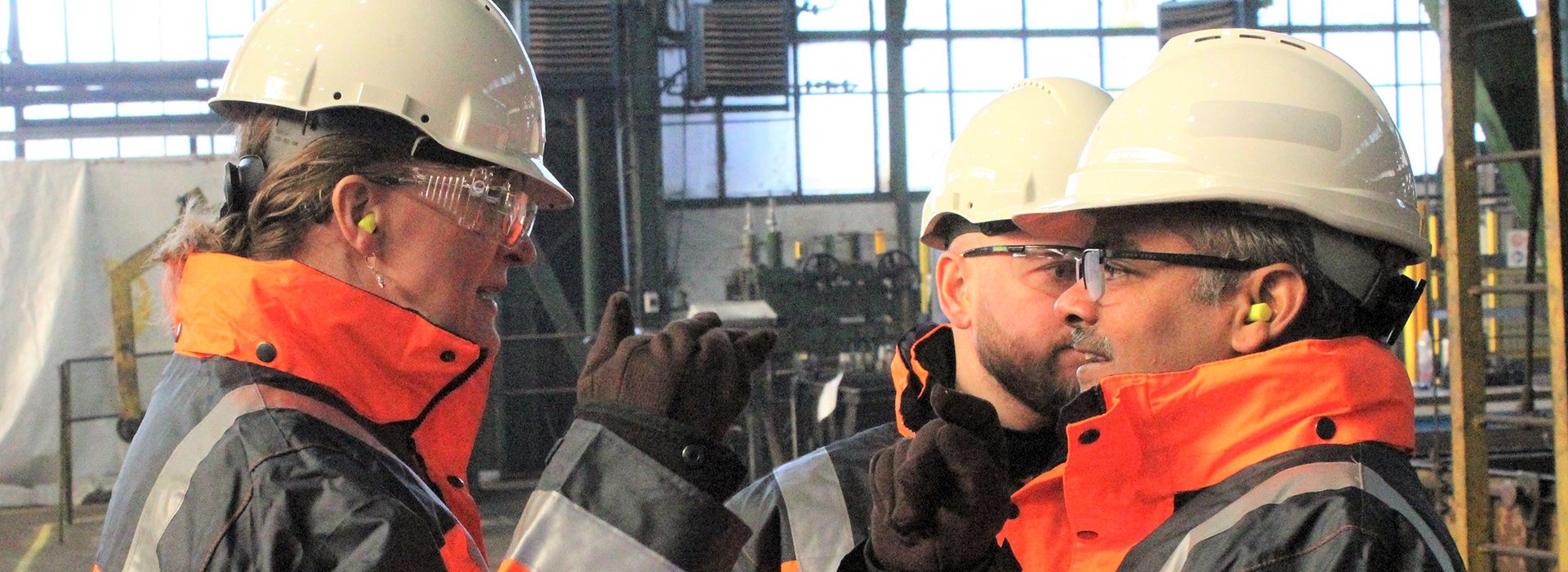Tanja Mantere: springboard to success
A logical mind and an interest in people have provided the perfect pairing for Tanja Mantere’s career in the steel industry. As CEO of ArcelorMittal Tubular Products, she explains to dss+ how challenging the monkey on your shoulder, continually gathering knowledge and sharing the spotlight can be springboards to success.


Tanja Mantere
CEO, ArcelorMittal Tubular Products
Q.
What inspired you to follow a career path that led you to where you are today in the steel industry?
I have always been good at subjects like maths, physics and chemistry that require sound logic, so I initially studied computer programming. At the same time, I worked as an assembly worker to pay for my studies and gain some valuable shop floor experience. But when I qualified at 22, I felt I wasn’t ready to step out of education. So I went on to study metallurgy and material science, which is how I eventually ended up where I am today in the steel sector. My earlier manufacturing career took on a broad range of roles including quality manager, project development, occupational safety development and operational excellence. I had and still have a great enthusiasm to learn, which meant I would put myself forward for challenges when they arose. The more I put myself forward, the more managerial responsibility and respect I gained. It’s an approach that gave me a lot of people-related skills to complement my science-based background. I still love a challenge, and I guess that’s what continues to drive me forward.
"It’s only by having an open-door policy where you listen and give your time that you can spot strengths, capabilities and adaptability in a person. At the same time, you must learn when to shut the door, so you are not overwhelmed. It’s about finding the right balance."
- Tanja Mantere, CEO, ArcelorMittal Tubular Products
Q.
Despite your science-based education, your career path has taken a more generalist rather than specialist direction. What impact has this had?
If I look back on my earlier career, there were times when I wished I had indepth knowledge on a particular issue. But I found it more satisfying to know something about a broad range of topics rather than everything about a narrow or specific topic. Of course, we need people who choose to become highly specialised in a particular field; these are the people who provide the knowledge and raw content that is the lifeblood of any organisation. However, shaping that knowledge and content into a viable business initiative and allowing people to achieve their potential is what I find attractive in a role. It’s an approach that requires both technical knowledge and awareness that there is a human side to business. I guess that makes me a jack of all trades and master of none. But so far it’s worked well for me.
Q.
You’ve painted an interesting picture of a leadership style that combines technical knowledge with solid people skills. How has this evolved?
I have had the luxury of being led by totally different types of personalities throughout my career; patient, strategic thinkers, as well as strong, performance-based leaders. I learned that you could quickly improve performance by pushing the workforce hard, but it’s unsustainable. I believe you can add more value by taking the long-term path. If you lay down the foundations that allow skills to develop, results may not be as fast but they will improve more consistently. It’s this long-term and inclusive path I favour, picking any low-hanging fruits along the way to boost performance. For me, it’s less about putting the spotlight on yourself as a leader and more about providing that learning pathway, so everyone is growing and developing together. It’s a path which allows you to know and understand the people you work with much better. It’s an approach that led to a senior appointment of a person with no previous experience to lead a business unit. That person is now shining and will go on to achieve even more. It’s only by having an open-door policy where you listen and give your time that you can spot strengths, capabilities and adaptability in a person. At the same time, you must learn when to shut the door, so you are not overwhelmed. It’s about finding the right balance.
"Safety and sustainability should be at the heart of every decision and action. You cannot have good performance without a safe and sustainable business model."
- Tanja Mantere, CEO, ArcelorMittal Tubular Products
Q.
What’s your view on how efforts on sustainability and safety fit in with operational excellence and performance?
I don’t see them as separate issues. Safety and sustainability should be at the heart of every decision and action. Increasingly, employees want to know their role is having a positive impact on communities and the planet. As a leader, you need to know that your workers are safe. You need to continually question and challenge so that safety improves year-on-year. Also, listen and learn from mistakes, so you are clear on what needs to change to improve safety records. A CEO in a previous company once said that if you cannot lead on safety, you cannot be a leader on anything. The compassion you show for keeping employees safe, how you communicate safety issues and how you apply them is true leadership. I’ve kept this idea with me as a reminder of the high level of integration needed within an organisation. You cannot have good performance without a safe and sustainable business model.
Q.
Like many manufacturing sectors, the steel industry is slowly changing as technological capabilities advance. What excites you about the future?
The steel industry is making considerable efforts to capture the benefits of the technological revolution. So far, this has mainly been automating parts of the production process. However, decarbonisation is vital, and the industry is working hard to innovate and produce green and carbon-neutral steel. Linked to this is sustainability. By this, I mean moving from producing steel in huge furnaces to a mini steel mill concept that offers faster, more efficient, greener steelmaking capabilities. Also, we are reducing our carbon footprint by focusing on local manufacturing and production units and working on tapping into a more localised supply chain. These are tricky challenges requiring lots of research and development but efforts that will result in a totally different steelmaking industry in future. That’s an exciting prospect.
Q.
As a CEO in an industry experiencing significant change, what would be your key drivers to ensure continuing success?
No matter how much change we experience, safety has to come first. As a priority, a safety culture where people can arrive at work and then go home unharmed is a basic human right. It requires leadership to create a culture where employees see safety through their own eyes by allowing them the time and space to evaluate risks and knowing where to focus their efforts. Strategic clarity is another key driver to success. Being clear on strategy helps communicate value and purpose across the company so that decisions and targets make sense and, importantly, are achieved. I’m also a great believer in empowering people through continual learning. Allowing people the freedom to develop can help challenge the monkey on their shoulder and fulfil their potential. Don’t be afraid to put the spotlight on others. If you allow your workforce to shine, you and the company shine. Then everyone wins.
"No matter how much change we experience, safety has to come first. As a priority, a safety culture where people can arrive at work and then go home unharmed is a basic human right."
- Tanja Mantere, CEO, ArcelorMittal Tubular Products